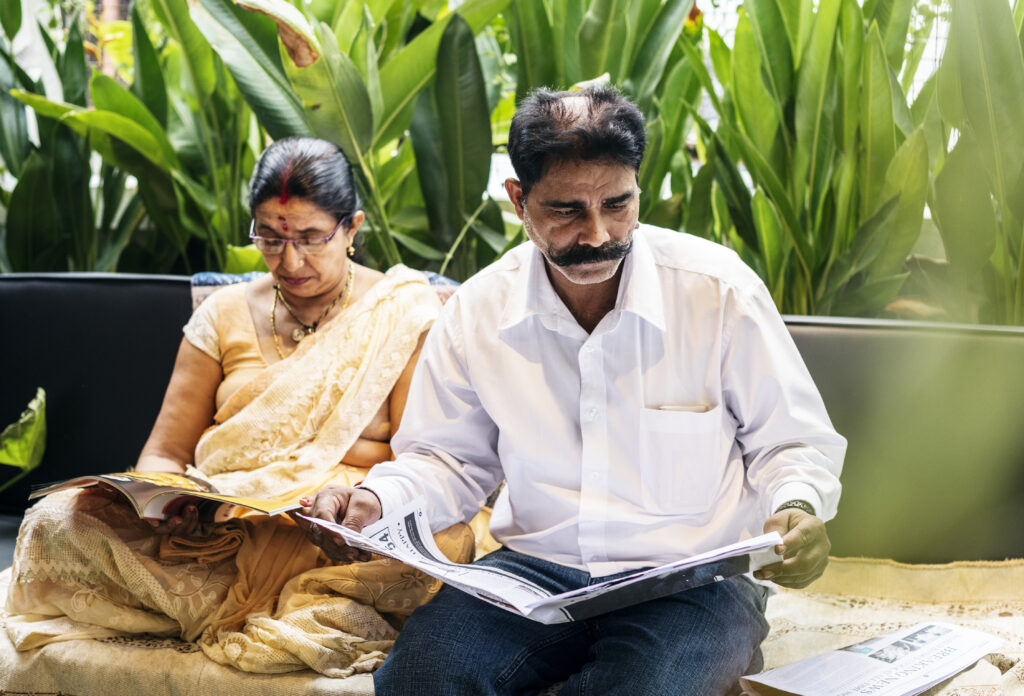How to plan Girl Child Corpus ? : Your Daughter’s Financial Future
Planning Your Daughter’s Financial Future

Planning for your daughter’s future requires a strategic approach that combines safety with growth. A girl-child corpus planner integrates Sukanya Samriddhi Yojana with equity investments to create substantial funds for education and marriage while addressing inflation concerns. This comprehensive guide reveals the optimal strategy for building a robust financial foundation for your daughter’s dreams.
The best investment you can make in your daughter’s future is a well-planned corpus that grows with her aspirations and educational needs.
Planning your daughter’s financial future is one of the most meaningful steps you can take as a parent. It ensures she has the resources to pursue her education, chase her dreams, and build a secure life with confidence. With thoughtful strategies, you can create a financial plan that grows with her needs over time.
Understanding Sukanya Samriddhi Yojana Benefits
Sukanya Samriddhi Yojana serves as the foundation of any girl-child corpus planner due to its government-backed security and attractive tax benefits. Launched under the Beti Bachao Beti Padhao campaign, SSY currently offers 8.2% interest rate with complete tax exemption under the EEE status. Parents can invest up to Rs 1.5 lakh annually until their daughter turns 14, with the account maturing after 21 years from opening. The partial withdrawal facility of 50% when the girl turns 18 provides crucial liquidity during critical education years.
A secure foundation today builds the confidence for tomorrow’s challenges, especially when planning for a girl child’s future education and dreams.
The Education Inflation Challenge
Most parents don’t realize that education inflation in India averages around 10% annually, significantly higher than general inflation. This means an engineering course costing Rs 25 lakh today would require approximately Rs 1.39 crore in 18 years. Traditional financial planning often fails to address this gap, showing nominal returns without adjusting for real education costs. Maximum SSY contributions would only generate around Rs 75.5 lakh, leaving a substantial shortfall for quality education.
Understanding the gap between traditional savings and education inflation is the first step toward creating a truly effective financial plan for your daughter’s aspirations and future opportunities.
Combining SSY with Equity Investments
This is where equity investments become essential for your girl-child corpus planner. Historical data shows that equity investments have delivered 11-15% returns over long periods, significantly outperforming traditional savings instruments. When implementing this hybrid approach, consider allocating 60-70% to SSY for stability and 30-40% to equity mutual funds for growth. For example, investing Rs 1 lakh annually in SSY and Rs 50,000 in equity SIPs could potentially create a corpus of over Rs 1.2 crore in 15 years, compared to just Rs 70 lakh with SSY alone.
Diversification isn’t just about spreading risk; it’s about maximizing opportunities for your daughter’s education and life goals through strategic asset allocation.
Strategic Top-Up Timing for Maximum Returns
Timing your top-ups strategically can significantly enhance your girl-child corpus planner’s effectiveness. For SSY, deposits should ideally be made before the 5th of each month to maximize interest calculation, as SSY interest is calculated on the minimum balance between the 5th day and end of month. For equity investments, regular monthly SIPs work better than lump-sum investments, as they benefit from rupee cost averaging and market volatility. Consider increasing your equity SIPs by 10-15% annually to match salary increases and inflation.
Consistency in investments, combined with strategic timing, transforms small savings into substantial educational funds for your daughter’s bright future and academic success.
SSY Lock-In Rules and Withdrawal Options Age-Based Investment Strategy,

Understanding SSY Lock-In Rules and Withdrawal Options
The lock-in caveats of SSY require careful planning to ensure liquidity when needed. While SSY has a 21-year maturity period, partial withdrawals are allowed after the girl turns 18, specifically for higher education or marriage expenses. However, premature closure for other reasons attracts penalties and lower interest rates. Complete withdrawal before 21 years is only permitted in case of the girl’s death. These restrictions make it crucial to maintain emergency funds separately and not rely solely on SSY for unexpected financial needs.
Understanding the fine print of lock-in periods helps you plan better, ensuring your daughter’s education funds are available exactly when she needs them most for her academic journey.
Age-Based Investment Strategy
The ideal girl-child corpus planner should be implemented in phases based on your daughter’s age and your financial capacity. For children under 5 years, maximize SSY contributions (Rs 1.5 lakh annually) and start small equity SIPs (Rs 3,000-5,000 monthly). The 20+ year time horizon allows for aggressive equity allocation. For children aged 5-10 years, maintain maximum SSY deposits while increasing equity allocations to 30-40% of total investment. For children above 10 years, focus more on equity investments (50% or more) as SSY contribution period is limited to just 4 more years.
Financial planning for your daughter is a journey that evolves with her growth, requiring adjustments at each stage to ensure her dreams remain within reach and achievable.
Advanced Projection Techniques for Accurate Planning
Traditional financial planning uses simple compound interest calculations, but more sophisticated techniques can provide accurate projections. Monte Carlo simulations run thousands of scenarios with different market conditions, interest rate changes, and inflation rates to provide a probability distribution of potential outcomes. Machine learning pattern recognition can analyze historical data to identify optimal contribution amounts and allocation strategies. Predictive analytics can forecast potential SSY interest rate changes based on government fiscal policies and inflation trends. These advanced techniques help bridge the gap between theoretical projections and real-world outcomes for your daughter’s education fund.
Accurate financial projections require sophisticated analysis that considers multiple variables and potential scenarios, ensuring your daughter’s education fund remains adequate regardless of market conditions.
Documentation Requirements for Smooth Operations
Proper documentation is crucial for managing your girl-child corpus planner effectively. For SSY, you need the girl child’s birth certificate, identity and address proof of the guardian, and KYC documents such as Aadhaar card. For equity investments, maintain KYC compliance, SIP registration forms, nomination details, and capital gain statements. Keep a dedicated file with all investment records, account statements, and withdrawal documents. This organization becomes crucial during tax filing and when making withdrawals for education expenses.
Proper documentation transforms your financial planning from a casual savings approach to a professional corpus management strategy for your daughter’s future educational success.
Regular Monitoring and Rebalancing
Regular monitoring ensures your girl-child corpus planner stays aligned with its objectives. Review performance of both SSY and equity components annually, adjust contribution amounts based on income changes, and rebalance asset allocation if market movements have skewed proportions. Trigger reviews during significant market corrections, SSY interest rate changes, or major life events. These systematic reviews ensure your plan adapts to changing circumstances while keeping your daughter’s educational goals firmly in focus.
A well-monitored financial plan adapts to life’s changes while keeping your daughter’s educational goals and future aspirations firmly in focus and achievable.
Comparison of Investment Options for Girl Child Pros and Cons of SSY + Equity Hybrid Strategy

Comparison of Investment Options for Girl Child
| Investment Option | Interest Rate | Tax Benefits | Lock-in Period | Partial Withdrawal | Special Features |
|---|---|---|---|---|---|
| Sukanya Samriddhi Yojana | 8.2% | EEE Status | 21 years | 50% after age 18 | Specifically for girls |
| Public Provident Fund | 7.1% | EEE Status | 15 years | After 5 years | General purpose |
| Fixed Deposit | 6-7% | Taxable | 5-10 years | Premature with penalty | Flexible tenure |
| National Savings Certificate | 7.7% | Taxable under 80C | 5 years | No premature | Fixed returns |
| Equity Mutual Funds | 11-15% | LTCG taxed after 1 year | None | Anytime | Market-linked returns |
Pros and Cons of SSY + Equity Hybrid Strategy
| Advantages | Disadvantages |
|---|---|
| Higher returns than traditional savings | Market volatility affects equity portion |
| Tax benefits under EEE status | Requires longer investment horizon |
| Partial withdrawal facility for education | SSY has strict lock-in period |
| Government-backed security for SSY portion | Equity investments carry risk |
| Beats education inflation effectively | Requires regular monitoring and rebalancing |
| Suitable for all income groups | Needs financial discipline |
Frequently Asked Questions
Q1: What is the minimum and maximum investment limit for Sukanya Samriddhi Yojana?
A: The minimum annual investment for SSY is Rs 250, while the maximum is Rs 1.5 lakh per financial year. Deposits can be made in multiples of Rs 100, making it accessible to parents from all income groups.
Q2: Can I open multiple SSY accounts for my daughter?
A: No, only one SSY account can be opened per girl child. However, parents can open up to two SSY accounts in a family—one for each girl child. Special provisions exist for twins or triplets.
Q3: What happens if I miss depositing the minimum amount in an SSY account?
A: If the minimum deposit of Rs 250 is not made in a financial year, the account is classified as “Account under Default.” It can be regularized within 15 years by depositing the missed amounts along with a penalty of Rs 50 per year.
Q4: When can my daughter withdraw money from her SSY account?
A: Partial withdrawal of up to 50% of the account balance is allowed once the girl child turns 18, specifically for higher education or marriage expenses. The account matures 21 years after opening, when the full amount can be withdrawn.
Q5: Is SSY interest rate fixed or variable?
A: SSY interest rate is variable and is declared by the Government of India every quarter. For July-September 2025, the rate is 8.2% per annum, compounded yearly.
Q6: Can I transfer my SSY account if I relocate to another city?
A: Yes, SSY accounts are transferable anywhere in India. You can request a transfer by submitting an application to the current post office or bank branch where the account is maintained.
Q7: What are the tax implications of premature SSY closure?
A: If SSY is prematurely closed for reasons other than specified (marriage after 18, death, or medical emergency), the account earns interest at the lower post-office savings account rate, and tax benefits may be impacted.
Q8: How does SSY compare with PPF for girl child planning?
A: SSY offers a higher interest rate (8.2% vs 7.1%) and is specifically designed for girl children with partial withdrawal benefits at age 18. PPF has a shorter lock-in period (15 years) but lacks the girl-child-specific features.
Q9: Can NRIs open SSY accounts for their daughters?
A: No, SSY accounts can only be opened by resident Indian parents or legal guardians for resident Indian girl children. If the girl child becomes an NRI, the account continues but no further deposits are allowed.
Q10: What happens to the SSY account if the girl child gets married before maturity?
A: Marriage doesn’t affect the SSY account’s continuation. The account continues until its 21-year maturity period. However, partial withdrawal for marriage expenses is allowed after the girl turns 18.
Q11: How should I choose equity funds for my daughter’s corpus planner?
A: For long-term goals like education (10+ years), consider diversified equity funds or index funds with consistent performance history. For medium-term goals (5-10 years), hybrid funds may be more appropriate.
Q12: Can I take an education loan against SSY balance?
A: No, SSY accounts cannot be used as collateral for loans. However, the accumulated amount can be withdrawn for education expenses when the girl turns 18.
Q13: What documents are required to open an SSY account?
A: You need the girl child’s birth certificate, identity and address proof of the guardian, and other KYC documents like Aadhaar card. For multiple girl children born together, a medical certificate is required.
Q14: How is SSY interest calculated?
A: SSY interest is calculated on the minimum balance between the 5th day of the month and the end of the month. Interest is credited annually at the end of the financial year.
Q15: Can I change the nominee in an SSY account?
A: Yes, the guardian can change the nominee by submitting a written application to the post office or bank where the account is maintained, along with the required documents.
Q16: What happens to the SSY account if the guardian dies?
A: If the guardian dies, the account continues with the surviving parent or a new legal guardian appointed by the court. The account continues until its original maturity period.
Q17: How does education inflation affect my girl-child corpus planning?
A: Education inflation in India averages around 10% annually, significantly higher than general inflation. This means education costs double approximately every 7-8 years, requiring higher returns than traditional savings provide.
Q18: Can I invest in SSY and PPF simultaneously for my daughter?
A: Yes, you can invest in both SSY and PPF simultaneously. This combination provides diversification within the debt portion of your portfolio while maximizing tax benefits under Section 80C.
Q19: What is the best age to start a girl-child corpus planner?
A: The ideal time to start is when your daughter is under 3 years old, as this maximizes the contribution period (14 years for SSY) and compounding benefits. However, starting at any age is better than not starting at all.
Q20: How often should I review my girl-child corpus planner?
A: Review your plan annually to assess progress, adjust for changing goals, and rebalance asset allocations if needed. More frequent reviews may be necessary during market volatility or major life changes.
Disclaimer
The information provided in this article is for educational purposes only and should not be considered as financial advice. Investment decisions should be made based on your individual financial situation, risk tolerance, and goals. For personalized financial planning advice, please consult with a qualified financial advisor. Visit our services page to connect with certified financial advisors who can help you create a customized girl-child corpus plan. For general inquiries, feel free to contact us or explore our blog for more financial insights. Remember that past performance does not guarantee future results, and all investments carry some level of risk.
Data Sources
- ClearTax – Sukanya Samriddhi Yojana Details: https://cleartax.in/s/sukanya-samriddhi-yojana
- Outlook Money – Combining SSY with Equity: https://www.outlookmoney.com/invest/equity/why-combining-ssy-with-equity-is-important-while-planning-for-your-daughters-future
- Arthgyaan – SSY and PPF for Education: https://arthgyaan.com/blog/how-sukanya-samridhhi-yojana-and-public-provident-fund-can-together-take-your-daughter-from-college-to-phd.html












